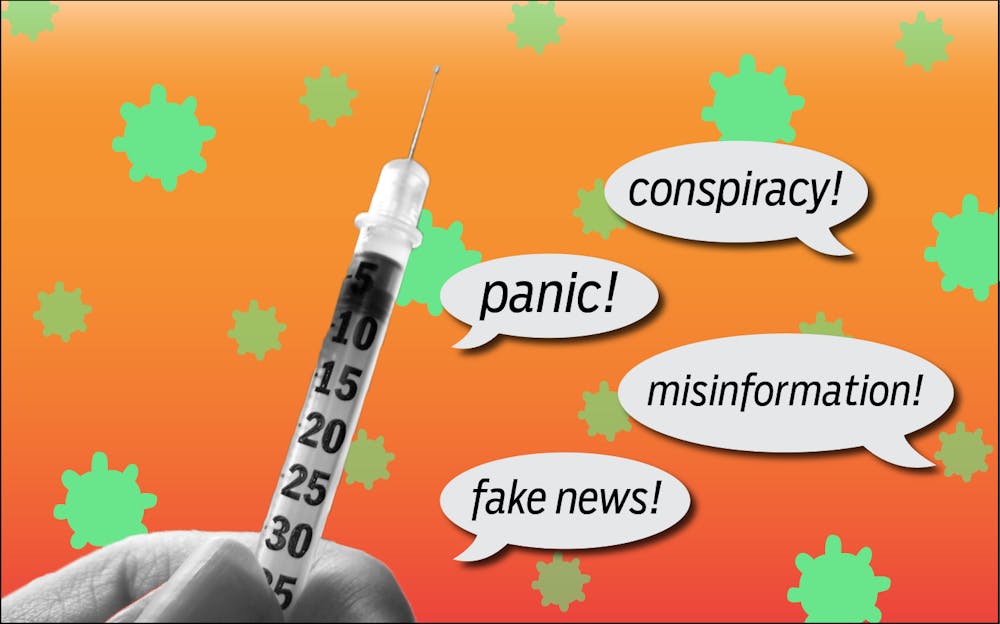IU’s Observatory on Social Media released a new dashboard on Feb. 23. that publishes data regarding how misinformation on social media influences attitudes toward the COVID-19 vaccine. The dashboard, called CoVaxxy, found a link between misinformation and vaccinations by comparing the percentage of people in each state unwilling to get vaccinated to the percentages of misinformed tweets in each state.
The dashboard is supplemented with data from the Centers for Disease Control and Prevention and Carnegie Mellon University and was published on OSoMe’s website Feb. 23. It was created by OSoMe researchers in partnership with colleagues from the Polytechnic University of Milan.
OSoMe Executive Director John Bryden said the tool was created in an effort to understand why levels of vaccine hesitancy have been so high among Americans and to identify if there is a correlation between false news and vaccine reluctance.
“It’s a question of, ‘Which states are getting more misinformation?’” Bryden said. “If we see more misinformation in a state, is that state more likely to be reluctant to take a vaccine?”
Bryden estimated the project has about 30 million tweets in its system.
To investigate if online information influences vaccine uptake, the team set up a data system where tweets with keywords relating to the vaccine — such as vaccine or COVID-19 — are collected from each state. Popular hashtags such as #covidiots, #pfizer and #moderna are also tracked.
Tweets including these words are pulled into the system, analyzed and compared with rates of vaccine hesitancy in the states the tweets came from.
The dashboard is interactive, allowing users to visualize different kinds of information using dropdown lists, maps and graphs. Information provided includes the percentage of people who have received the vaccine, the total number of vaccines distributed, and the correlation between online discussion and vaccine adoption.
Bryden said a common conspiracy theory is that Microsoft co-founder Bill Gates uses the vaccine to implant microchips in the body. He also said Republican states and people have shown higher levels of vaccine hesitancy and have spread more misinformation compared to Democratic states and people.
Matt DeVerna, a Knight Fellow at OSoMe, said solely getting news from social media alone can sometimes bias peoples’ perceptions of issues by making them more inclined to believe one side or another.
DeVerna said the goal of the dashboard is to give accurate statistics and to help people visualize how conversations surrounding the vaccine play into how likely people are to get the vaccine.
Mike Gruszczynski, an assistant professor in the Media School, said what people share on social media is often based on preexisting beliefs, but people also change their minds according to what others say and do on social media.
He said he’s seen people posting excitedly about getting the COVID-19 vaccine, which he said can make it more socially acceptable and encourage more people to get it.
To stop the spread of misinformation, he said, it’s important to slow down and read sources thoroughly before sharing any information.
“It's so easy to click the retweet or share button,” Gruszczynski said. “A common person on the internet can’t really stop a bot account from spreading disinformation, but they can do their part in not becoming a mechanism within that machine.”




